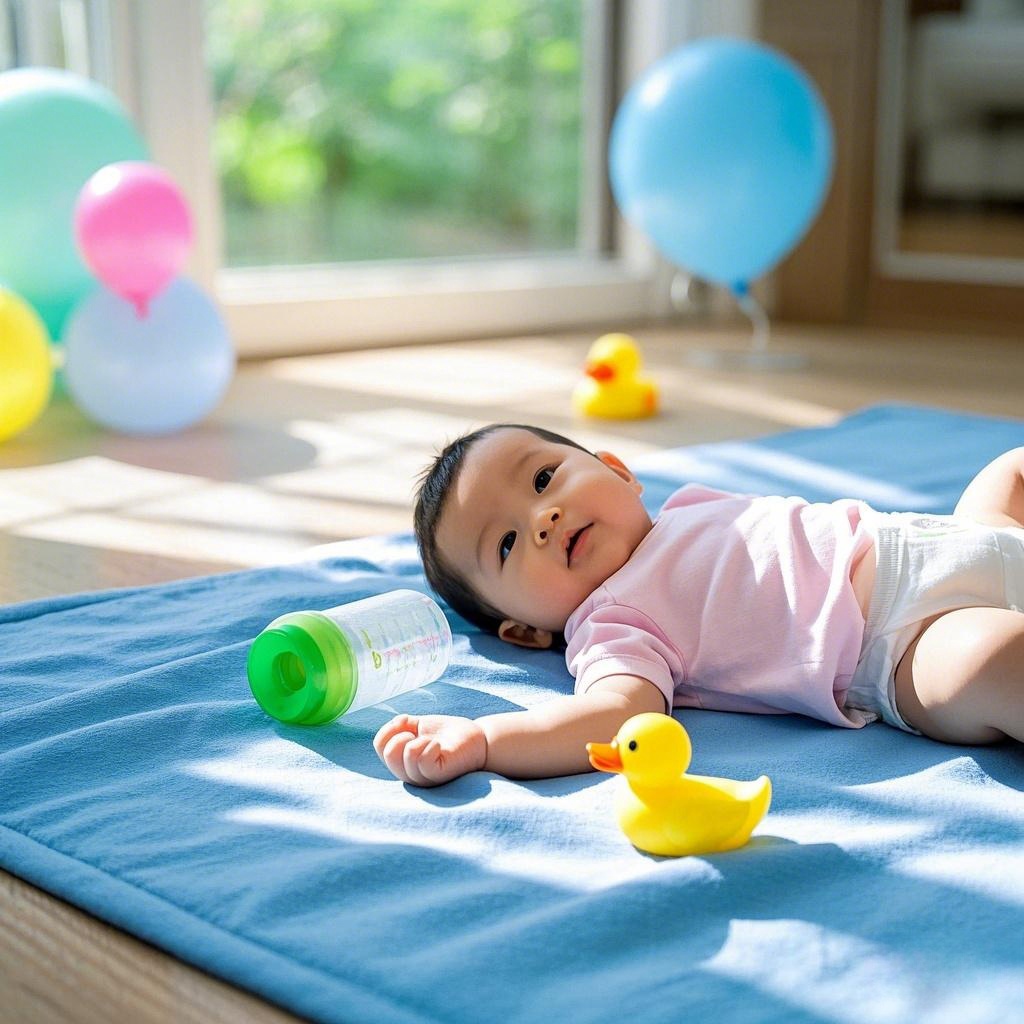Introduction
Few moments unsettle new parents more than watching their cheerful toddler suddenly slap his own head or bang a tiny fist against his leg. Questions flood in: Is he in pain? Is this normal? Could something be wrong with my parenting? The good news is that, in most homes, self-hitting is a transient stage rather than a sign of lasting trouble. Toddlers have limited vocabularies, impulsive nervous systems, and an undeveloped sense of cause and effect; when big feelings arrive, the body often “speaks” before words. By exploring the developmental, emotional, and environmental reasons behind the behavior—and by learning calm, consistent ways to respond—you can help your child move from striking out to speaking up, all while preserving everyone’s sanity and safety.
1. Understanding Self-Hitting in Toddlers

Toddlers are wired to explore everything, including the limits of their own bodies. Between ages one and three, they discover that actions produce reactions: push a tower and blocks scatter, drop a spoon and a parent retrieves it, swat a forehead and everyone gasps. Because the motion is dramatic, it quickly earns attention—positive, negative, or both. Attention is a powerful reward at this age, so even a gentle tap can become a repeatable experiment. Layer onto that experiment a vocabulary of only a few dozen words and a storm of new sensations—hunger, fatigue, excitement—and you have the perfect recipe for impulsive behaviors. Even boredom can spark an exploratory “thwack,” as the sudden noise breaks monotony in a way blocks or books cannot. Neurologists note that the toddler’s under-developed inhibitory pathways make stopping a novel action harder than starting one, which explains why an initial light pat can escalate into several rhythmic hits before an adult intervenes. Most children test self-hitting briefly, abandon it as language expands, and never revisit the habit; still, the trial run can feel alarming while it lasts.
2. Developmental Milestones That Can Trigger the Behavior

Around the eighteenth-month mark, toddlers experience a burst of autonomy that psychologists often call the “I can do it!” phase. Motor coordination improves faster than speech, so little bodies race ahead of little mouths. A child who wants juice but cannot yet pronounce “cup please” may resort to physical gestures—including self-directed slaps—to convey urgency. Likewise, the sensory system is still calibrating; some toddlers crave strong sensations—pressure, sound, movement—to feel organized. A quick smack to the head delivers instant proprioceptive feedback and, again, the parent’s attention. Teething discomfort, ear infections, or even a simple itch can add physical irritants to the mix, turning an experimental tap into a self-soothing routine. Developmental specialists also observe that emerging skills such as climbing, drawing, or naming objects create internal frustration when execution lags behind imagination: the mind pictures a perfect tower, but shaky hands topple it, prompting a reflexive hit. Understanding these milestones reframes the behavior as communication, not misbehavior, and invites compassionate problem-solving rather than punishment.
3. Emotional and Environmental Triggers

Toddlers feel emotions with the intensity of a thunderstorm and the unpredictability of a tropical climate. Common sparks include hunger, overtiredness, sudden transitions, or unfamiliar sensory landscapes such as noisy malls and glaring supermarket aisles. Because the prefrontal cortex—the brain’s impulse-control center—is still under construction, powerful feelings often travel straight from the limbic system to the muscles. If a favored tower collapses for the third time, the child who cannot yet say “I’m frustrated!” may swing at his own head as a pressure-release valve. Social dynamics matter too: a new sibling, a hurried daycare drop-off, or a parent absorbed by a phone can leave a toddler grasping for connection. By mapping when, where, and with whom the hitting happens, you turn guesswork into data and can adjust routines, environments, or expectations before sparks fly.
4. Practical Strategies for Parents

- Stay calm and neutral: A gasp or scold can reinforce the cycle by showering the toddler with dramatic attention. Instead, kneel to eye level, offer gentle physical containment—such as holding the hands or placing a soft pillow between child and surface—and state a brief boundary: “I won’t let you hurt yourself.”
- Provide a safe outlet: Big-body motions like stomping on a cushion, squeezing a stress ball, pounding play-dough, or jumping on a mini-trampoline satisfy the need for sensory feedback without causing harm.
- Label the feeling: Use simple phrases: “You’re angry the block broke,” or “That loud blender scared you.” Naming emotions builds the vocabulary that eventually replaces hitting.
- Teach calming tools early: Practice belly breathing, sing a favorite rhyme, or guide your child to a cozy corner stocked with stuffed animals and board books. Regular rehearsals during peaceful moments make the tools easier to access in a crisis.
- Predictability prevents meltdowns: Consistent meal, nap, and play schedules reduce low-blood-sugar tantrums and overtired spirals. Prepare toddlers for transitions with countdown warnings or visual timers so change never feels sudden.
- Carry a sensory toolkit: Chewy silicone rings, small picture cards of emotion faces, a weighted lap pad, or a soft brush for “brushing therapy” can redirect energy on the go.
- Celebrate successes: Clap, hug, and praise each time your toddler chooses words, signs, or a designated calm-down activity instead of self-hitting. Positive reinforcement speeds learning far more effectively than reprimands.
Conclusion
Self-hitting in toddlers is unsettling to witness, yet for most families it is a brief waypoint on the road toward emotional self-regulation. When you see the behavior as non-verbal communication, you can translate the message and teach healthier scripts for expressing needs. Track triggers, offer safe outlets, name feelings, and maintain a steady, reassuring presence. Celebrate each small victory and remember that neural pathways for impulse control are still under construction; patience and practice are the builders. If the hitting escalates, causes injury, or appears alongside speech delays or social withdrawal, consult a pediatrician or child psychologist for a tailored plan. With informed, compassionate guidance, your child will soon trade slaps for words, tears for problem-solving, and frustration for growing confidence in navigating the big world ahead.





